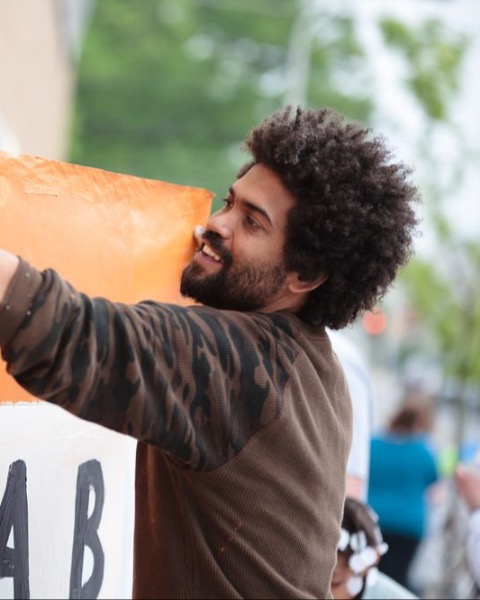Back
APA acknowledges that traffic patterns and transportation delays are unavoidable and beyond our control. When purchasing multiple tickets for mobile workshops and tours please allow a cushion of time between the arrival time of one workshop/tour the departure time of another workshop/tour.
Population Diversity and Inclusive Design
How Artists Can Help Create Dynamic Public Spaces
Sunday, April 2, 2023
2:00 PM – 5:00 PM CDT
CM | 2
Ticket Price: $62Division Endorsement: Urban Design and Preservation Division

Karen A. Thompson, AICP
Philadelphia, PA

Keir Johnston (he/him/his)
Co-Founder and Lead Artist
Amber Art and Design
Philadelphia, Pennsylvania- CS
- AS

Sarah R. Eberle (she/her/hers)
Philadelphia, Pennsylvania
Lead Mobile Workshop Coordinator(s)
Mobile Workshop Guide(s)
Mobile Workshop Coordinator(s)
Presenters from the Delaware River Waterfront Corporation (DRWC) demonstrate how artists contribute to creative public engagement and improve the design and function of inclusive public spaces.
Graffiti Pier, a relic of Philadelphia’s industrial past embraced by street artists and nature-seeking neighbors, became Instagram-famous. However, users were skeptical about plans to turn the pier into an official public space. Development pressure and sea level rise necessitated user participation in planning to ensure trust and buy-in. Using an artist-led advisory council, along with zines, anonymous meetings, and other engagement opportunities, DRWC reached the diverse community. This engagement framework led to unique, inclusive, public input that will continue to inform the project as it advances.
The Cherry Street Pier project takes an overlooked piece of historic waterfront and opens the space to artists who strengthen their networks while engaging with the public. Artists participate in program development so the space becomes a civic asset that is more than a gathering space or venue. They continue to inform how Cherry Street Pier functions as a public space — a feedback loop that contributes to inclusiveness and diversity across audiences.
Cherry Street Pier is a pilot project in repurposing civic assets and programming to support economic opportunity, promote inclusion, and create space for collaboration, creativity, and equity.
There is some light walking during this workshop.
Graffiti Pier, a relic of Philadelphia’s industrial past embraced by street artists and nature-seeking neighbors, became Instagram-famous. However, users were skeptical about plans to turn the pier into an official public space. Development pressure and sea level rise necessitated user participation in planning to ensure trust and buy-in. Using an artist-led advisory council, along with zines, anonymous meetings, and other engagement opportunities, DRWC reached the diverse community. This engagement framework led to unique, inclusive, public input that will continue to inform the project as it advances.
The Cherry Street Pier project takes an overlooked piece of historic waterfront and opens the space to artists who strengthen their networks while engaging with the public. Artists participate in program development so the space becomes a civic asset that is more than a gathering space or venue. They continue to inform how Cherry Street Pier functions as a public space — a feedback loop that contributes to inclusiveness and diversity across audiences.
Cherry Street Pier is a pilot project in repurposing civic assets and programming to support economic opportunity, promote inclusion, and create space for collaboration, creativity, and equity.
There is some light walking during this workshop.
Learning Objectives:
- Specify how public outreach can engage artists in all phases of a project — from concept to ongoing programming — to reach diverse audiences, build trust, and create authentic public spaces.
- Understand how art and adaptive reuse can operate hand-in-hand to create dynamic public spaces.
- Explore case studies of two dramatically different public spaces to see how art and artists can play multiple roles in the design and programming of public spaces to maximize diversity.
